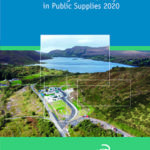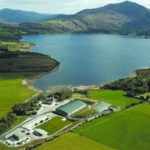The EPA Drinking Water Quality in Public Supplies Report 2020 released today,…
EPA report: Drinking water quality remains high but resilience of many supplies needs to improve
1st August 2023: The EPA Drinking water quality in private supplies report for 2022 released today, shows that over 99.7% of public water supplies comply with bacterial and chemical limits, which means our public water is safe to drink.
- The quality of drinking water from public supplies remains very high, with over 99.7% of samples compliant with bacterial and chemical limits.
- 481,000 people are currently served by “at-risk” supplies on the EPA’s Remedial Action List (RAL), up from 374,000 people in 2021.
- Persistent THM (Trihalomethane) failures were detected at supplies serving 235,000 people, doubling the population affected since 2021.
- The cumulative risk from lead in our drinking water continues, with insufficient progress reported for 2022.
However, many supplies still lack robust treatment measures to guarantee their long-term resilience and safety. The EPA’s Remedial Action List (RAL) identifies “at-risk” supplies that require improvements to safeguard public health. In 2022, the number of people served by public water supplies on the RAL increased to nearly 481,000, up from 374,000 at the end of 2021.
Construction of a new plant at Lee Road (Cork City) and its removal from the RAL represents significant progress in 2022. Strategic progress has also been made in other areas such as disinfection and making the lead remediation grant easier for the public to access.
“Our public water quality remains very high, which means that the public can be confident that the drinking water supplied to their homes is safe to drink. Uisce Éireann has made good progress in delivering necessary new drinking water infrastructure such as the new plant at Lee Road in Cork which now supplies high quality drinking water to 97,000 people. However, the EPA through our inspection and monitoring programme, continues to identify drinking water plants that are at risk and require improvements and upgrades. At the end of 2022, there were 481,000 people being served by at risk supplies on EPA’s RAL. Uisce Éireann needs to prioritise investment in those plants to improve the resilience of drinking supplies, to provide a safe and secure supply into the future.”
Dr Tom Ryan, EPA Director
In addition, the growing number of people affected by persistent THM (Trihalomethane) failures, now at 235,000 people, is of particular concern. Greater effort is needed by Uisce Éireann to implement improvements at supplies to minimise exposure to THM’s, including at major supplies such as Limerick City and the Barrow supply in Kildare.
“Lead in our drinking water is a cumulative risk to human health. Progress to remove lead from our drinking water supply networks, public buildings and affected homes is far too slow. The EPA welcomes the expansion of the lead remediation grant scheme, which will ease the financial burden on homeowners to replace lead piping. However, leadership is required at national level to address lead in public supplies. Uisce Éireann must accelerate the rollout of their lead mitigation plan and Government departments must outline their plan for lead replacement in public buildings as part of the National Lead Strategy.”
Noel Byrne, EPA Programme Manager, on lead in drinking water
In 2022, boil water notices impacted 182,000 people — a slight improvement since 2021. One third of boil water notices were in place for more than 30 days. The EPA recognise the challenges that boil water notices pose to individuals and communities, but they are essential to safeguard public health. The risk of boil water notices on some supplies will remain until Uisce Éireann takes proactive measures to address the underlying causes and improve the resilience of these supplies.
Learn more:
The EPA Drinking Water Quality in Public Supplies 2022 Report and the complete list of public water supplies currently on the Remedial Action List – including details of the proposed remedial measures and associated timeframes – are available on the EPA website.







